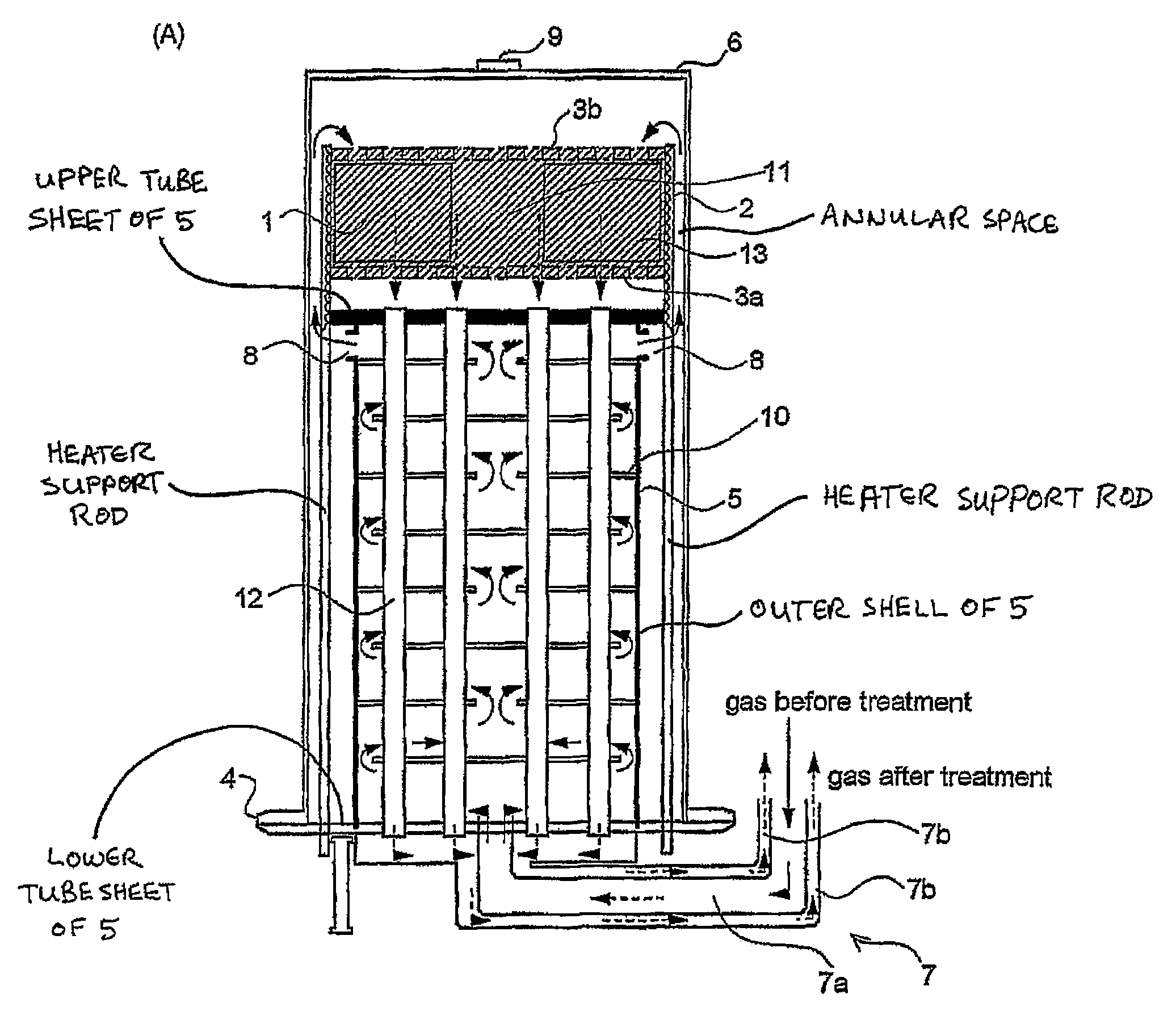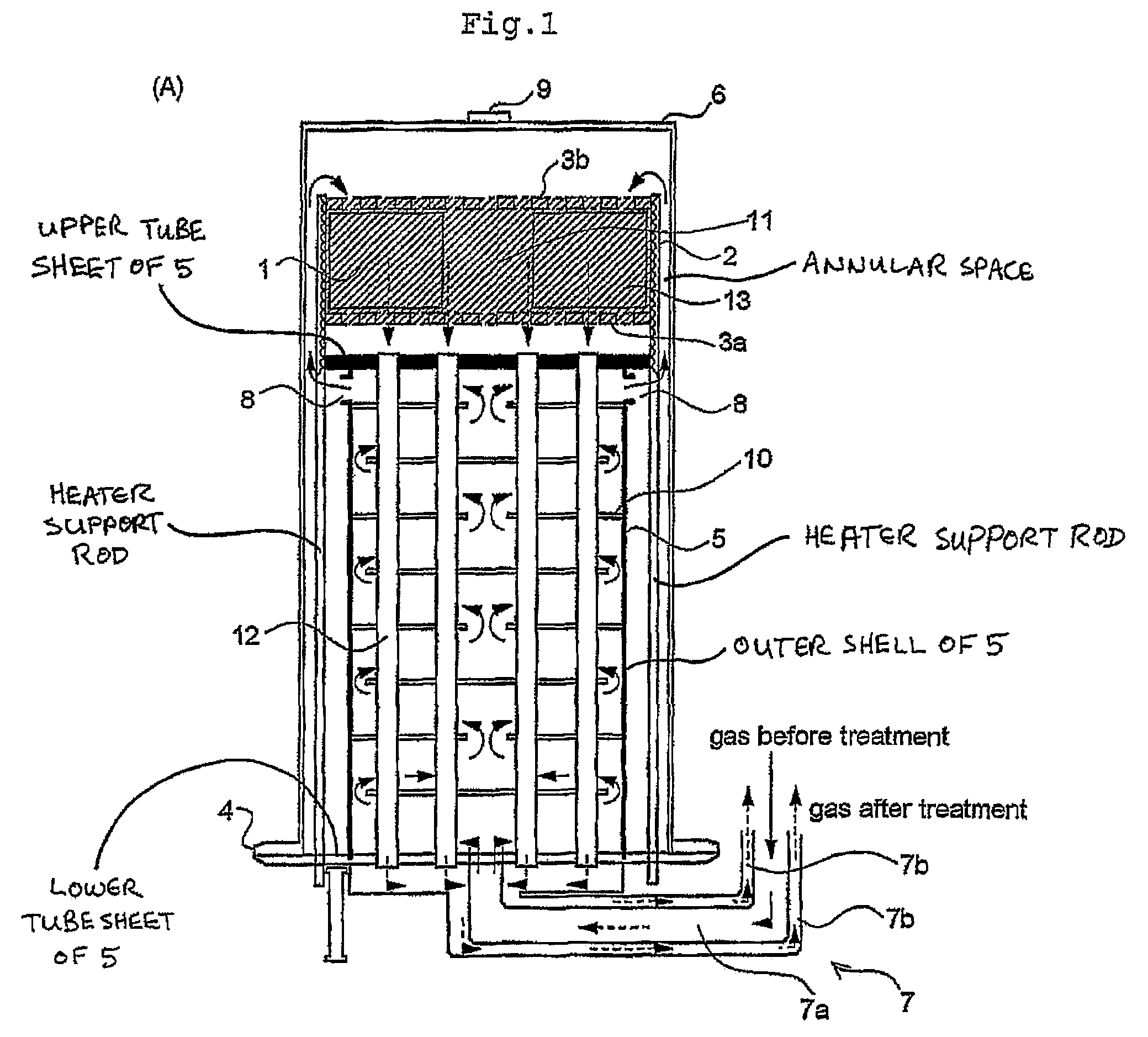Fuel conversion reactor
a fuel conversion reactor and fuel technology, applied in the direction of gas-gas reaction process, physical/chemical process catalyst, lighting and heating apparatus, etc., can solve the problem of less hydrogen per molecule of hydrogen-containing fuel, external heat may be required to drive the reaction forward, and low carbon monoxide toleran
- Summary
- Abstract
- Description
- Claims
- Application Information
AI Technical Summary
Benefits of technology
Problems solved by technology
Method used
Image
Examples
Embodiment Construction
[0036]The preferred fuel conversion reactors according to the invention are described below as fuel reformers. However, it will be appreciated that any of the preferred structures described below may be equally suitable, with minor modifications, for use as catalytic or non-catalytic burners.
[0037]FIG. 1 illustrates a first preferred fuel reformer 10 according to the invention, which is constructed for the purpose of converting hydrogen-containing fuel to hydrogen gas by means of an autothermal reformation process in which a gaseous fluid containing steam and oxygen or an oxygen-containing gas such as air undergoes a catalyzed reaction with a hydrogen-containing fuel. Where the hydrogen-containing fuel comprises a hydrocarbon, the following catalyzed reactions take place in the fuel reformer 10:
(1) Partial Oxidation (Exothermic)
CnHm+n / 2 O2→nCO+m / 2H2
(2) Steam Reformation (Endothermic)
CnHm+nH2O→nCO+(m / 2+n)H2
As mentioned above, the two steps of the autothermal reformation take place in...
PUM
| Property | Measurement | Unit |
|---|---|---|
| temperatures | aaaaa | aaaaa |
| temperatures | aaaaa | aaaaa |
| gap | aaaaa | aaaaa |
Abstract
Description
Claims
Application Information
 Login to View More
Login to View More - R&D
- Intellectual Property
- Life Sciences
- Materials
- Tech Scout
- Unparalleled Data Quality
- Higher Quality Content
- 60% Fewer Hallucinations
Browse by: Latest US Patents, China's latest patents, Technical Efficacy Thesaurus, Application Domain, Technology Topic, Popular Technical Reports.
© 2025 PatSnap. All rights reserved.Legal|Privacy policy|Modern Slavery Act Transparency Statement|Sitemap|About US| Contact US: help@patsnap.com



